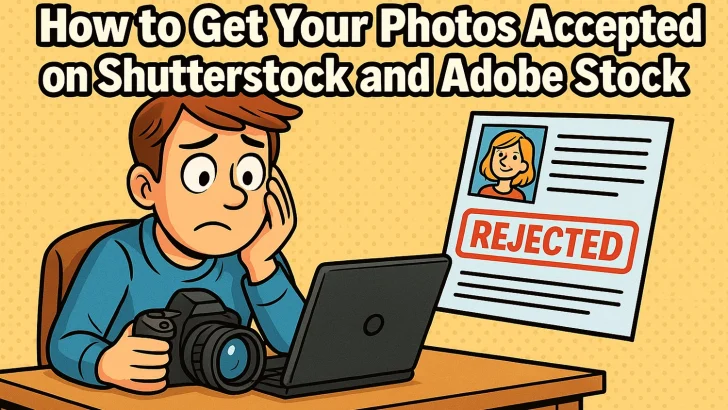Struggling with photo rejections? Learn the exact steps to get your photos accepted on Shutterstock and Adobe Stock. Discover submission tips, quality standards, and common mistakes to avoid.
Selling your photos on stock platforms like Shutterstock and Adobe Stock can be a great way to earn passive income. However, many beginners face frequent photo rejections due to simple but avoidable mistakes.
If you want to increase your chances of getting your work approved, follow this guide to understand what both platforms expect and how to meet their standards.
✅ 1. Understand Submission Guidelines
Both Shutterstock and Adobe Stock have strict submission requirements. Here’s a breakdown:
Shutterstock Guidelines:
-
Minimum resolution: 4.0 megapixels
-
No noise, blurriness, or heavy compression
-
Avoid trademarks, logos, and identifiable people without model releases
Adobe Stock Guidelines:
-
Minimum resolution: 4MP (but 6MP or higher is ideal)
-
Sharp focus and correct exposure
-
No watermarks, borders, or filters
📌 Tip: Always read the latest contributor guidelines on their official websites before uploading.
📷 2. Use High-Quality Equipment and Settings
-
Use a DSLR, mirrorless, or high-end smartphone with RAW capability
-
Shoot in natural lighting for even exposure
-
Keep ISO low to reduce noise
-
Always use a tripod for product and still-life shots
🎯 Goal: Submit sharp, well-lit, and high-resolution images.
🎨 3. Perfect Your Post-Processing
Before uploading:
-
Remove dust spots and chromatic aberration
-
Adjust white balance and exposure correctly
-
Export in JPEG format with minimal compression (Adobe: JPEG, sRGB color space)
❌ Avoid: Over-editing, HDR effects, extreme saturation
📁 4. Add Accurate Metadata (Titles, Keywords, and Categories)
Your photo’s discoverability depends on good metadata.
Tips:
-
Use descriptive titles (e.g., “Young woman drinking coffee in a cafe”)
-
Include relevant keywords (15–50 for Adobe Stock; up to 50 for Shutterstock)
-
Add location and subject matter where appropriate
🚫 Avoid: Keyword stuffing or using irrelevant tags.
⚠️ 5. Avoid These Common Rejection Reasons
Technical Issues:
-
Noise or grain
-
Poor lighting
-
Lack of sharpness
-
Artifacts from compression
Legal Issues:
-
Trademarked logos (e.g., on clothing, signs)
-
People without signed model releases
-
Private property without property releases
Content Issues:
-
Overused or unoriginal concepts
-
Low commercial value
-
Poor composition
📤 6. Upload Consistently and in Batches
Don’t submit everything at once. Upload:
-
5–10 images per week as you begin
-
Track which types get approved
-
Learn from feedback in rejection notes
🧠 Pro Tip: Use rejection as a learning opportunity to improve future submissions.
🚀 Final Thoughts
Getting your photos accepted on Shutterstock and Adobe Stock requires attention to detail, technical quality, and consistency. The more you understand what each platform expects, the more confident and successful you’ll become as a microstock contributor.
Keep refining your photography, stay updated with current trends, and treat rejections as stepping stones toward improvement.

